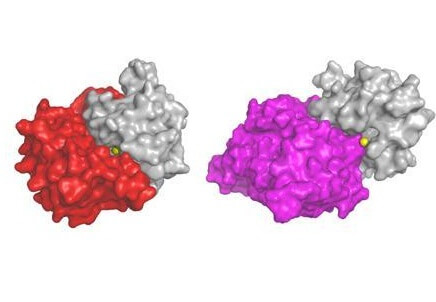The results of the research are published today in the scientific journal Nature Medicine

Scientists at the Weizmann Institute of Science have developed a method that makes it possible to overcome autoimmune diseases. In these diseases, including multiple sclerosis, Crohn's disease and rheumatoid arthritis, the immune system mistakenly attacks the body's tissues, causing them damage. The institute's scientists were able to mobilize certain factors in the immune system of mice, and make them attack one of the generators of the autoimmune processes. The results of the study are published today in the scientific journal Medicine Nature.
The MMP family of enzymes plays an essential role in various vital biological processes, such as, among other things, cell motility and proliferation and wound healing. But, when certain members of the family, especially 9MMP, get out of control, they can contribute to the onset of autoimmune diseases and the formation of cancer metastases. Prof. Irit Sagi from the Department of Biological Control at the Weizmann Institute of Science, and the members of her research group, have been looking for ways to selectively block these enzymes in recent years, hoping that this ability will pave the way for the development of effective treatments for autoimmune diseases.
In the past, scientists tried to block the MMP proteins using drugs based on small synthetic molecules, which directly attack the enzymes. It turned out that these drugs are ineffective, and sometimes even cause unwanted side effects. However, as in many other cases, nature has already found an effective way to control the activity of MMP proteins. This role is assigned to inhibitory proteins, called TIMPs, which act in precise structural alignment: they send an "arm" that penetrates precisely to cleave the enzyme
The MMP where its active site is located, and closes it like a cork. "Unfortunately," says Prof. Sagi, "it is very difficult to imitate this precision with artificial means."
Dr. Neta Sela-Paswell, from Prof. Sagi's group, and other members of the group, were looking for a way to inhibit the enzymes indirectly. This is how the idea arose to try and make the immune system create antibodies against the disease-causing enzymes. This is, in fact, a kind of vaccine against the zinc accumulation found in the active site of the 9MMP: as in vaccines against viral diseases, in which parts of viruses or killed viruses are injected into the body, causing the immune system to create antibodies - which can then block viruses, so too, the scientists hypothesized, It is possible to immunize the body against the active site of the MMP enzyme, and cause the immune system to create antibodies that will inhibit its activity.
Together with Prof. Avraham Schnetzer from the Department of Organic Chemistry at the Weizmann Institute of Science, Prof. Sagi and her group members created the "immune compound": an artificial version of the zinc pool. Then inject the substance into mice, and check if immune activity against MMP occurs. It turned out that new antibodies were indeed found in the blood of the mice. A detailed analysis of the structure of the new antibodies revealed that their method of action is similar to the method used by the natural inhibitors (TIMP proteins): they send an arm into the cleft in the enzyme, and block the active site by binding the zinc cluster. These antibodies showed selectivity: they only hit MMP9 and another family member.
Initially, the scientists were able to block the disease-causing enzyme (MMP9) in the mouse body in this way, but later they managed to block the version of the enzyme that works in the human body as well.
In a follow-up experiment, the scientists induced an inflammatory syndrome in mice simulating Crohn's disease. As they had hoped, the treatment using antibodies succeeded in preventing the appearance of the symptoms of the disease.
"This method may lead to the development of innovative treatments for many diseases that are caused by similar proteins," says Prof. Sagi. The "Knowledge Research and Development" company, which promotes commercial applications based on the inventions of Weizmann Institute of Science scientists, submitted a patent application for the synthetic vaccine component, as well as for the antibodies created following its introduction into the body.
Also participating in the study were: Dr. Orli Diem, Dr. Haim Rosenberg, Raanan Margalit, Dr. Rina Ard-Yilin, and Dr. Tzipi Shoham from the Departments of Structural Biology and Biological Control, Raghavanda Kikari from the Department of Organic Chemistry, Dr. Miri Eisenstein from the Department For chemical research infrastructures, Dr. Uri Brenner from the Department of Veterinary Resources, and Dr. Tamar Danon from the Department of Molecular Biology of the Cell.

One response
It is very important to find out what is the mechanism that allows the immune system to create an antibody to that component of the zinc accumulated vaccine and try to imitate it so that we can create an antibody to anything by artificial means.